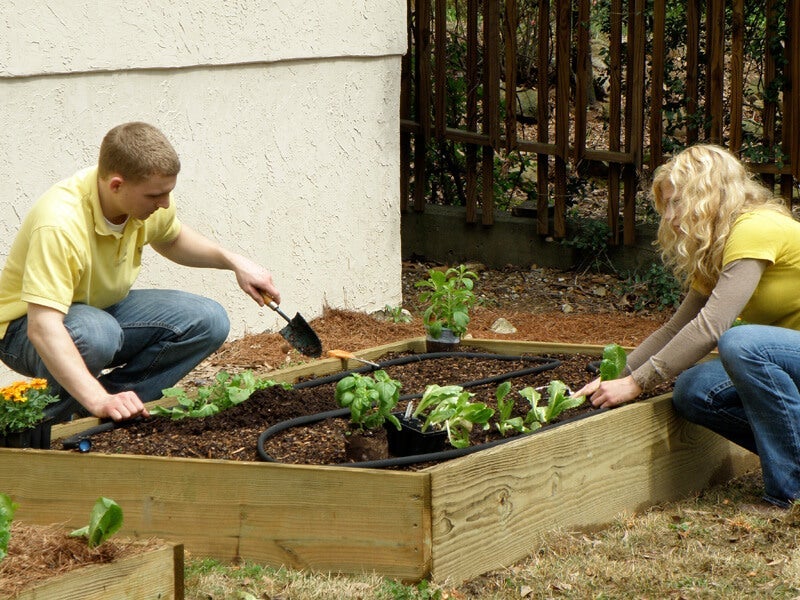Looking to start a vegetable garden? Get ready to enjoy the best vegetables you've ever eaten. In many regions, vegetables will grow 3 or 4 seasons of the year. Warm-season vegetables, such as tomatoes and cucumbers, grow in the frost-free weather of late spring until fall. Cool-season vegetables, such as lettuce and broccoli, grow in the cooler weather of early spring and fall; most withstand light frosts.
If this is your first vegetable garden, you'll want to make sure it's a manageable size. A few containers might be way to "dip your toe" in the water. Or, a raised bed measuring either 4 x 4 or 4 x 8 feet, such as the ones featured in our Raised Bed Planting Plans section, will give you plenty of space to learn. In the ground, the biggest that you might want to attempt is a 12 x 24-foot summer garden for a family of 4 that could include: 3 hills of yellow squash; 1 mound of zucchini; 10 assorted peppers; 6 tomato plants; 12 okra plants; a 12-foot row of bush beans; 2 cucumbers on a cage; 2 eggplant; 6 basil; 1 rosemary, and a few low-growing herbs such as oregano, thyme, and marjoram tucked in here and there.
When it comes to growing vegetables, 3 things are absolutely crucial for success: full sun, good soil, and plenty of water. Because Bonnie Plant varieties are distributed regionally, you will automatically have the right ones for growing in your area.
Full sun means at least 6 to 8 hours of direct sunlight. While some greens and many herbs can make due with less light, vegetables like tomatoes, peppers, eggplants, cucumbers, and squash all demand their full share of the sun.
No matter which type or size of garden you choose, make sure you're starting out with premium quality soil that will help your plants grow big and give you a great harvest. If you're growing in pots, fill them with Miracle-Gro® Potting Mix. Trying a raised bed? Load it up with Miracle-Gro® Raised Bed Soil. If you're going to make a go of an in-ground garden, mix some Miracle-Gro® Garden Soil for Vegetables & Herbs into the top few inches of existing soil.
It's also important to know that, like people, vegetables need to be fed. An easy way to add nutrition to the soil is to sprinkle a continuous-release fertilizer, such as Miracle-Gro® Shake ‘n Feed® Tomato, Fruit & Vegetable Plant Food, around your plants, following label directions.
You'll be surprised how quickly vegetables develop. Most grow from a tiny transplant to a full harvest in 30 to 90 days. Because of this, you need to keep an eye on your vegetable garden. An overgrown zucchini can quickly begin to resemble a baseball bat and over-mature okra are like cardboard, so you'll want to pick them before they get too ripe. On the other hand, a garden-grown okra pod is usually flawless, not skinned and browned from shipping. Zucchini and other vegetables are the same way: Their flavor is fullest because they have been on the plant until the last possible moment, using the extra time to build flavors and sugars.
It's worth noting that the first season of your vegetable garden is usually the hardest because of the time, cost, and work in setting up the garden. The next time you plant it will be much easier, as the main set-up will already be done. Whenever you have a question, check our web site for the answer.
Above all, don't give up. As you learn how to start a vegetable garden, you will make mistakes. So did Einstein. A vegetable garden asks that you check it almost daily for water, pest control, and harvest. If you do that, you will discover a new dimension to living. What you see and learn in those regular visits will be as rewarding as the harvest. Enjoy.




 Herbs
Herbs
 Vegetables
Vegetables
 Fruit
Fruit
 Flowers
Flowers
 Succulents
Succulents


